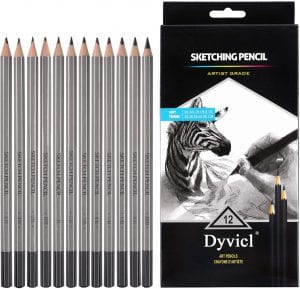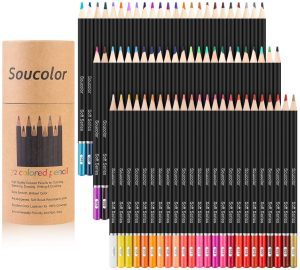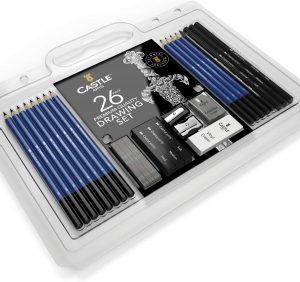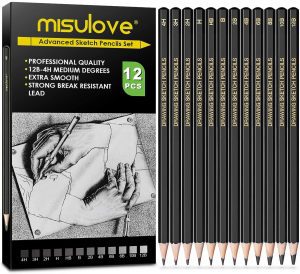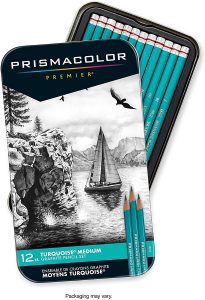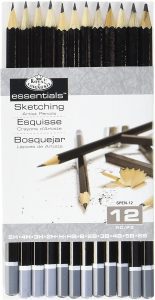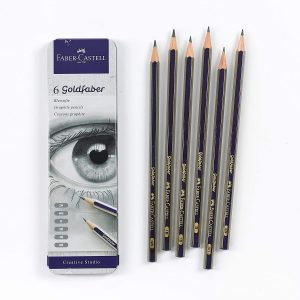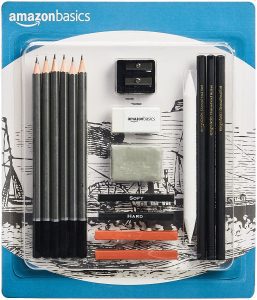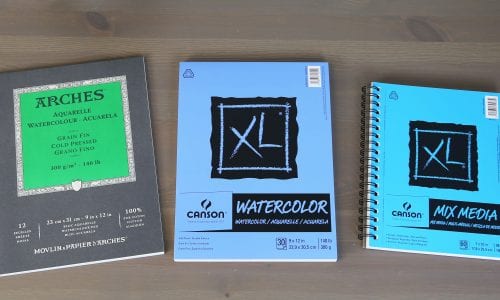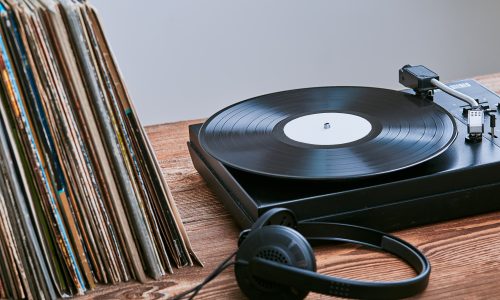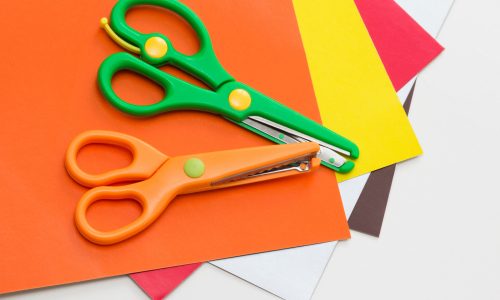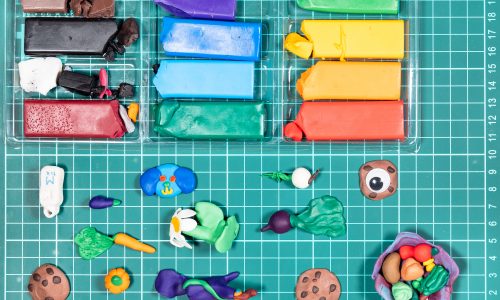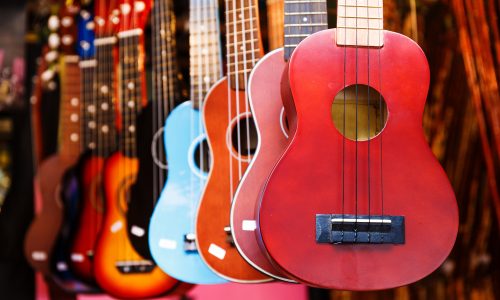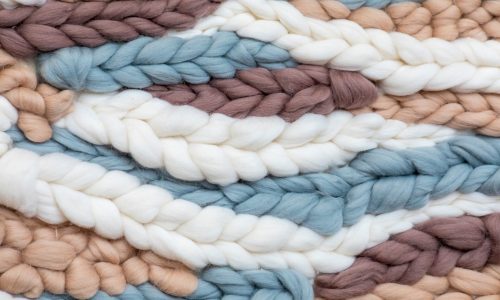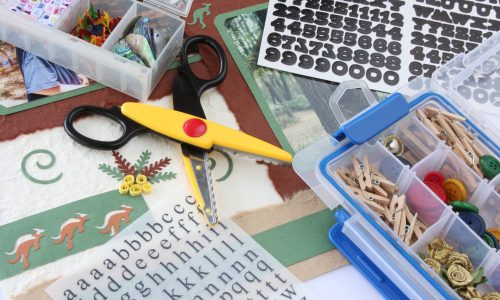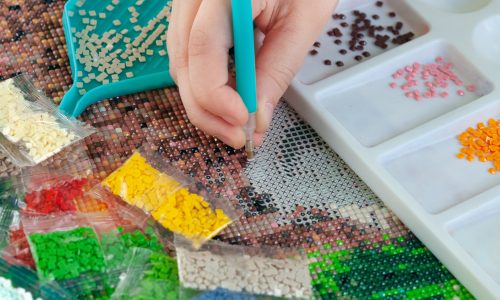The Best Sketching Pencils
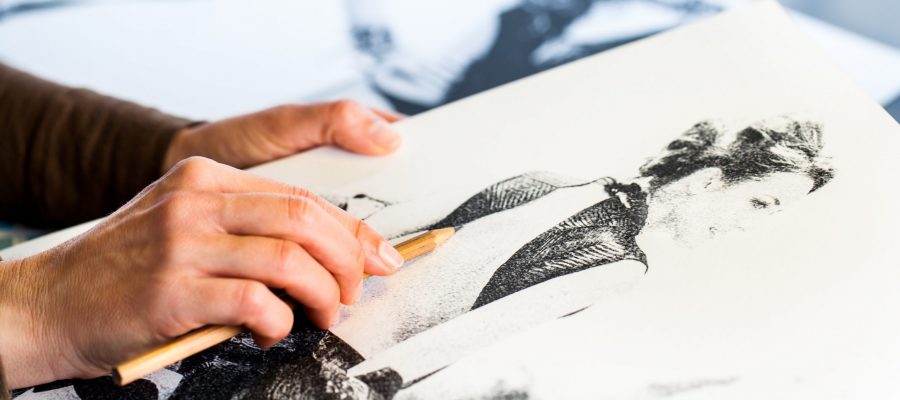
Our Review Process
Don't Waste Your Money is focused on helping you make the best purchasing decision. Our team of experts spends hundreds of hours analyzing, testing, and researching products so you don't have to. Learn more.
Our Picks For The Top Sketching Pencil
- 1. Dyvici Graphite Sketching Pencils, 12-Piece
- 2. Soucolor Assorted Color Sketching Pencils, 72-Piece
- 3. Castle Art Supplies Medium Point 26-Piece Sketching Pencil & Artist Set
- 4. MISULOVE Pre-Sharpened 12-Piece Graphite Sketching Pencils
- 5. Prismacolor 12-Piece Graphite Sketching Pencils
- 6. Royal & Langnickel 12-Piece Graphite Sketching Pencils
- 7. Faber-Castell 6-Piece Clay & Graphite Sketching Pencils
- 8. Amazon Basics 17-Piece Sketching Pencil Set
Whether you're a beginner or a professional artist, you'll love this set of sketching pencils. They have an affordable price tag, yet still include pencils in a variety of hardnesses, so you can do everything from draw to write to shade. Thanks to the pencils' hexagonal shape, they are also easy to hold.
Budget-Friendly OptionThis set of sketching pencils is eco-friendly and free of any harmful toxins.
Looking to give your drawings color? This set of sketching pencils comes in 72 different shades from beige to light blue to deep red. They even come in an eco-friendly container for easy transport to a park or nearby lake, where you find yourself the most inspired to create.
Great for Young CreatorsHaving a budding artist in your household? These sketching pencils make for an excellent birthday, Christmas or Easter gift.
You'll get 26 pieces made from premium materials in this sketching pencils set. It includes 12 graphite pencils, three charcoal pencils in different grades, graphite and charcoal sticks, a woodless specialist pencil for blending, medium-specific erasers, two sharpeners, and printed tutorials.
Comes With Printed TutorialsThis 26-piece pencil set includes erasers, sharpeners and printed tutorials to help you start creating immediately.
In this sketching pencils set, you'll get 12 matte black graphite pencils ranging in hardness from 4H to 12B. They're made from eco-friendly materials like basswood and are easily sharpened and erased. They also have a special bonding that helps them resist breakage. You'll want these for precise work.
Eco-Friendly SetMade from environmentally friendly material, this set is an all-natural addition to your art supply collection.
Buying Guide
Although any piece of art relies on the talent of the creator, the right tools can make all the difference. Whether you’re just starting out or honing existing skills, practice will help you grow and improve.
Sketching is one of the best ways you can develop as an artist. Through sketching, you learn about shapes and composition while getting invaluable practice that you can apply to your projects later, whether you sculpt, paint or even take photos. The skills you learn through sketching can help you set up a scene for maximum visual impact.
You won’t need any special tools necessary to start sketching. You can grab a sheet of paper and any writing utensil and go for it. But once you get your hands on a set of graphite sketching pencils, you’ll immediately see the value in them.
A good sketching pencil set gives you a variety of shades to help you create contours and shading. This can add depth to your sketches that you can’t achieve as easily with other writing utensils. But there are different types of pencil sets, so it’s important to know what you’re looking for.
As you’re shopping, you’ll see letter grades on the sketching pencils you consider. H tells you the hardness of the pencil’s lead core and a corresponding number tells you how light the lead is. The higher the number, the lighter the lead; the hardest lead operates more like a chisel, with a light, fine line. H leads resist smudging.
On the darker end of the graphite hardness scale, you’ll also see sketching pencils designated with the letter B. A higher number next to the B tells you it’s blacker than pencils with a lower number next to the B. B leads smudge more easily, but you’ll also find them more erasable.
Basically, H pencils are lighter and harder than B pencils. The scale runs from the lightest and hardest (H9) pencils to the darkest and softest (9B). At about the middle, HB describes most regular pencils.
A pencil marked F may have a finer line. A fine pencil has a more defined point and can stay sharp longer. However, sometimes F is used to denote a grade on the graphite hardness scale between H (the lowest H lead) and HB (the middle of the scale).
It’s important to adjust your pencil to the artwork you’re trying to create. If you’re drawing something technical or you want to stick with lighter lines, choose an H pencil. For brush-like pencil drawings, go for B leads. When it’s time to add details, an F lead can do the trick.
Once you’ve squared away the type of pencils you need, it’s important to pay close attention to the quality of the material. There are plenty of sets for beginners, but more advanced artists will need to look for pencils that are built for more sophisticated drawing.
What to Look For
- Some pencils have features that will make them last a little longer. Break resistance is especially important for those planning to get a lot of use out of their sketching pencils.
- Your paper comes into play in the final product, too. Smooth paper and Bristol board are both great options for standard sketches. But for more detailed work, cartridge paper can take your drawings to the next level.
- You can buy sets that include only pencils, but if you’re just starting out, look for one that has erasers and sharpeners as well.
- Woodless or solid graphite pencils can help with blending. These come with some sets, so you might not have to shop for them separately.
- Some pencil sets come with tutorials to help you as you’re getting started with sketching. If not, you can find plenty of tutorials online, including some step-by-step videos on YouTube.
- Artists aren’t the only ones who can benefit from sketching pencils. Architects, designers and others use them as well. It’s important to go for a pencil set that focuses on hardness if you’re using them for technical drawings.
- For those who are environmentally conscious, some manufacturers make pencil sets using sustainable materials to help you keep your carbon footprint small.
- As you get to know more about your unique drawing style, you’ll be able to better steer yourself toward the best type of pencil for you.
- If you’re concerned about smudging, prioritize H pencils in your search. But you can also preserve your drawings with a fixative spray after they’re finished.
- The best way to get better at sketching is to practice, practice, practice. But you can also learn by looking at the sketches of others and possibly even taking a class. Over time, you’ll improve. In fact, copying other sketches is a great way to get comfortable with drawing so that you can start to create your own unique artwork.
- A drawing board can give you a firm surface to create on, along with a dedicated place to set up and store your work. Make sure it’s larger than the paper you’ll be working with and ensure there’s plenty of light so you can see what you’re doing.
- If you’ve been used to writing pencils all your life, you might find that you need to adjust your hand position for sketching. It’s important to find the positioning that’s most comfortable for you, but don’t assume you have to use the writing position you were taught in elementary school when you were learning to print your name.
- One of the best things you can do is make sketching a regular practice. Don’t feel pressured to be perfect at first. Experiment with different paper types and sketching pencils until you find your own style.
More to Explore
You don’t have to be an aspiring artist to enjoy the benefits of sketching. In fact, the practice can be a great way to relax and boost your mental health. Research has found that drawing enhances a person’s ability to think creatively. As you work to represent objects on the page, you observe the world around you and boost your critical thinking skills.
Sketching is also a way to simply relax after a long day. By focusing on your art, you can shut out the stresses of the day and practice mindfulness. It can help release endorphins, which naturally boost your mood and help reduce the sensation of pain. The result may be an overall increased feeling of well-being. You can also release endorphins by enjoying good food or exercising.

